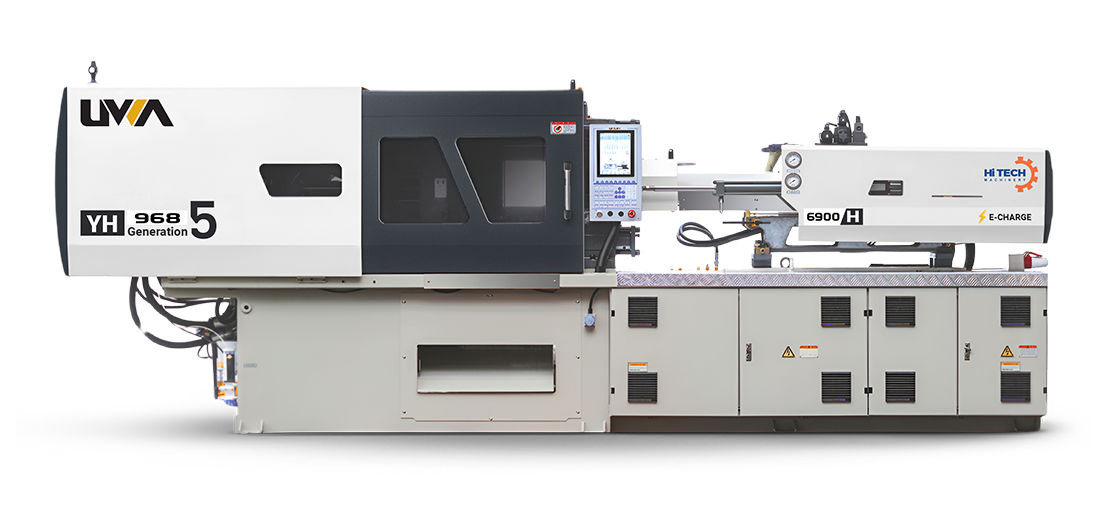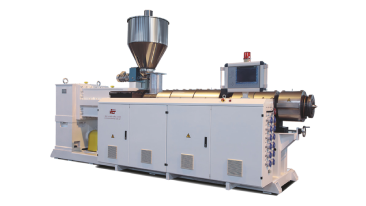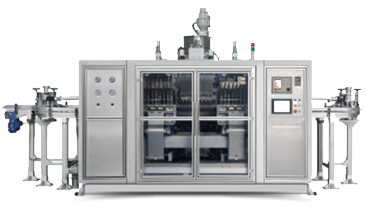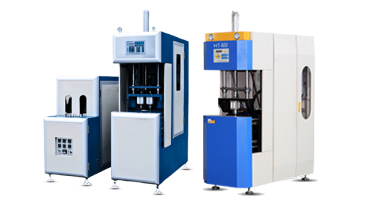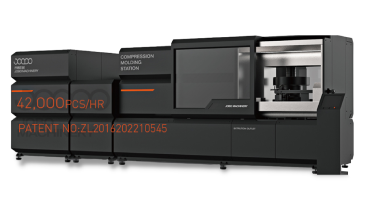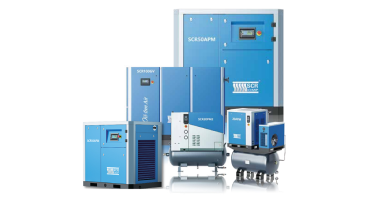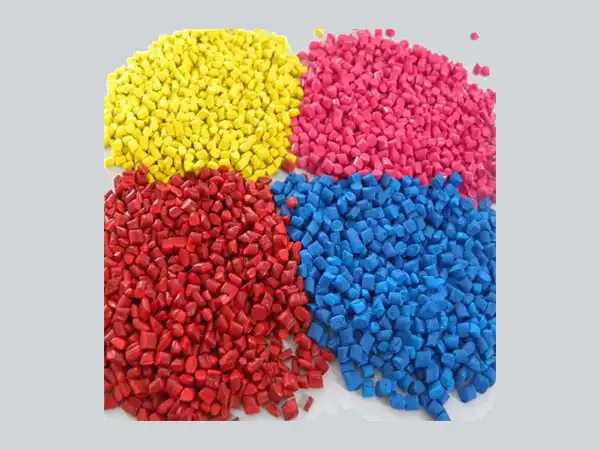We use plastics in huge range of applications. You will find plastics everywhere in your surroundings. It doesn’t matter if you are in home or office or factory, you are traveling, you are using plastics. This plastic may exist in many forms, it may be hard plastic, soft plastic, or in the form of foam. As each plastic has a different chemical composition, so there are different methods to use them in manufacturing plastic goods. Generally, we divide all plastic types (thermoplastic / thermosets) in different categories based on their behavior. Let’s briefly describe these categories and then we will discuss commonly used plastic types.
Thermoplastic vs Thermosets
These are two separate forms of polymers which are categorized on the base of their reaction upon heating. Basic difference between plastic type thermoplastic and thermosets is that thermoset polymer becomes hard when heated. Once the thermoset polymer hardens, it cannot be remolded. On the other hand, thermoplastic polymers can be remolded, reheated, and cooled without changes in chemical composition.
Thermoset components become set in their chemical and physical properties after an initial heat treatment and therefore additional heat treatment cannot affect thermoset material. The best example to understand this process is the egg boiling process. After the egg is boiled, there is no way to return its shape to the initial stage by applying additional heat. Similarly, thermoset plastics retain their strength and shape even when heated and are ideal where tight tolerance and excellent strength are required, even at elevated temperatures. Typical applications of thermoset plastics include appliance, automotive, lighting, electrical and energy markets due to enhanced thermal and chemical stability.
As discussed earlier, thermoplastic material becomes soft above from certain temperature and becomes more fluid as more heat is applied. (HiTech Plastics Machinery specializes in thermoplastic items manufacturing solutions) This property allows the thermoplastics to be recycled and remolded without any negative effect on the chemical composition. Depending on the resin, thermoplastic can serve to shrink resistance, high strength, low stress or easy flexibility. A notable advantage of thermoplastics is their use in a wider range of applications. Other advantages include lightweight, low processing cost, easy to manufacture and high strength. Disadvantages of thermoplastics are relatively low melting points and poor chemical resistance (like organic solvents, highly polar solvents, and hydrocarbons).
Types of Plastics Materials
- Acetal
- Acrylonitrile Butadiene Styrene or ABS
- Acrylic or PMMA
- Polyethylene or PE
- High Density Polyethylene or HDPE
- Low Density Polyethylene or LDPE
- Linear Low Density Polyethylene or LLDPE
- Chlorinated Polyvinylchloride or CPVC
- Ionomer
- Polystyrene or PS
- High Impact Polystyrene or HIPS
- Nylon-11
- Nylon-12
- Nylon-6
- Nylon-4/6
- Nylon-6/6
- Nylon-6/10
- Nylon-6/12
- PC-PET Alloy
- PC-ABS Alloy
- Polybutylene Terephthalate or PBT
- Polyaryletherketone or PAEK
- Polycarbonate or PC
- Polyether ether ketone or PEEK
- Polyethersulfone or PES
- Polyetherimide or PEI
- Polyethylene Terephthalate or PET
- Polyethylene Terephthalate Glycol or PETG
- Polyphenylene Sulfide or PPS
- Polyphenylene Oxide or PPO
- Polysulfone or PSU
- Polypropylene or PP
- Polyurethane or PUR
- Polyvinyl Chloride or PVC
Let’s discuss the properties of each above-mentioned plastic material.
[ps2id id=’acetal’ target=”/]Acetal or Polyoxymethylene (POM)
Acetal plastic is a general purpose, semi-crystalline and engineered thermoplastic. Semi-Crystalline plastics are those type of plastics which have sharp melting points and very organized molecular structure. Engineered plastic means that they can handle heat better than other plastics and are more suitable for extreme environments. Typical applications for injection-molded acetal include gears, bearings, lock systems, knife handles automotive and consumer electronics industry. Trade names of acetal are Celcon, Hostaform, Lucel, Derlin, Kepital, Lucet, Tarnoform and Ultraform etc. Processing temperature range of acetal is 375-420 oF or 190-215 oC. Mold temperature range is 120-200 oF or 50-95 oC. The density of acetal is 1.410-1.420 g/cm3.
[ps2id id=’abs’ target=”/]Acrylonitrile Butadiene Styrene or ABS
ABS polymer is derived from acrylonitrile, butadiene and styrene. ABS is thermoplastic which means they liquify on their melting point and can easily injection molded. As ABS plastics melt at certain temperature and hardens on cooling without any significant degradation, so they can be recycled easily. ABS is also amorphous polymer which means it has no true melting point. Trade names of ABS are AVP, CEVIAN, LUSTRAN, TRILAC, Veroplas, ESPREE, ABEL, Toyolac, and KRALASTIC etc. Typical applications of ABS include musical instruments (such as recorders, piano movements, plastic obes and clarinets), golf club heads, automotive (trim components, bumper bars), medical (nebulizers, inhalers), luggage and protective carrying cases, keyboard keycaps, small kitchen appliances and toys etc. The processing temperature range of ABS is 425-500 oF or 220-260 oC. Mold temperature range is 120-190 oF or 50-90 oC.
[ps2id id=’pmma’ target=”/]Acrylic or PMMA
Acrylic, also known as Polymethyl Methacrylate (PMMA), is a transparent thermoplastic homopolymer that is used as alternative to Polycarbonate when physical strength is not needed. As compared to PE or PS, acrylic has better environmental stability. Therefore, it is more suitable for many outdoor and automotive applications. Trade names of acrylic are Plexiglass, Kamax, Lustran, Acryrex, Optix and acrylate etc. Acrylic is mostly used in lenses, security barriers, acrylic nails, medical devices, paint, furniture and LCD screens. Due to its clarity, brilliance, transparency and light weight as compared to glass, it is also used for windows and enclosures around exhibits. The processing temperature range of ABS is 350-500 oF or 175-260 oC. The mold temperature range is 100-200 oF or 40-95 oC.
[ps2id id=’pe’ target=”/]Polyethylene or PE
Polyethylene is a thermoplastic polymer obtained from polymerization of ethylene. PE is the most widely used plastic in the world with tens of millions of tons consumption each year. There are many types of polyethylene including Low-Density Polyethylene (LDPE), High-Density Polyethylene (HDPE) and Ultra-High Molecular Weight Polyethylene (UHMW). Each type is best suited for different applications.
[ps2id id=’hdpe’ target=”/]High Density Polyethylene or HDPE
HDPE is a highly crystalline opaque polymer with low moisture absorption. HDPE has high chemical resistance, tensile strength and impact resistance. Trade names are Ineos, SCLAIR, Braskem, Alathon, Formolene and Bapolene etc. High Density Polyethylene has characteristics such as good low temperature resistance, good electrical insulator, low cost polymer having good processability and higher tensile strength than other forms of polyethylene. Applications of HDPE are packaging (trays, cans, crates, milk and juice bottles etc.), consumer goods (garbage containers, toys, ice boxes, housewares etc.), fibers, textile, pipes and fittings, cable protection, steel pipe coating, fuel tanks and many more. The processing temperature range of HDPE is 380-550 oF or 195-290 oC. The mold temperature range is 80-100 oF or 25-40 oC. Density of HDPE is 0.93 to 0.97 g/cm3.
[ps2id id=’ldpe’ target=”/]Low-Density Polyethylene or LDPE
LDPE is a thermoplastic made from gaseous ethylene under high pressure and high temperatures. As name suggests, LDPE has a lower density than HDPE. LDPE is impact resistant, moisture resistant, chemicals resistant, low cost and semi-crystalline polymer. Generally, it is used in high volume extrusion processes. Other typical applications of LDPE are trays, bags, general purpose containers, agricultural, packaging, film, bags and electrical insulation. Trade names are Kemcor, Riblene, Braskem, Marlex and Lutene. Processing temperature range of LDPE is 325-550 oF or 165-290 oC. The mold temperature range is 70-90 oF or 20-30 oC. The density range of LDPE is 0.917 to 0.930 g/cm3.
[ps2id id=’lldpe’ target=”/]Linear Low-Density Polyethylene or LLDPE
LLDPE is obtained from co-polymerization of ethylene with olefins and is semi-crystalline polymer with improved chemical and moisture resistance. As compared to LDPE, LLDPE is stronger and has greater stress-crack resistance and environmental resistance. Applications of LLDPE include covers, containers, Plastic wrap, toys, stretch wrap, pouches, caps, medical. Trade names are DOW, ULTZEX, Braskem, NEO-ZEX, CERTENE, Petrothene, and Flexirene. LLDPE has higher impact resistance and enhanced tensile strength than LDPE. The processing temperature range of LLDPE is 325-550 oF or 165-290 oC. The mold temperature range is 70-90 oF or 20-30 oC. The density LLDPE range is 0.91 to 0.94 g/cm3.
[ps2id id=’cpvc’ target=”/]Chlorinated Polyvinylchloride or CPVC
CPVC is a thermoplastic that is obtained from chlorination of PVC resin through a radical chlorination reaction. The chlorine added to polyvinyl chloride (PVC) makes it more flexible, strong chemical resistance and give ability to withstand higher temperatures as compared to standard PVC. Advantages of CPVC are lightweight, easy to cut, and no complex tools required for installation. Typical applications of CPVC include hot-and-cool water pipes, wire coating, chilled water piping, and industrial liquid handling. Trade names of CPVC are Kaneka, TempRite, CTS, Harvel, Geon, Corzan and BlazeMaster. The processing temperature range of CPVC is 375-435 oF or 190-225 oC. The mold temperature range is 50-175 oF or 10-80 oC.
[ps2id id=’ionomer’ target=”/]Ionomer
Ionomer is a polymer that is composed of neutral and ionized polymer segments. Combination of metal ions and polymer increases the strength and toughness. Coatings and Outer layer of golf balls are applications where ionomers are used in order to increase the toughness. Moreover, ionomer is also used in packaging, industrial, liner, sports equipment, film, sheet and automotive exteriors. Trade names are Bexloy and Surlyn. Processing temperature range of ionomer is 420-530 oF or 215-275 oC. Mold temperature range is 40-120 oF or 5-50 oC.
[ps2id id=’ps’ target=”/]Polystyrene or PS
Polystyrene (PS) is a naturally transparent thermoplastic material. PS can be in the form of solid or foam. The most basic form of PS is General purpose polystyrene (or crystal PS) which is transparent, hard and rather brittle. Similarly, foamed form of PS is referred to as expandable PS (EPS) or styrofoam. Typical applications of solid form of PS include medical devices (like test tubes, tissue culture trays, petri dishes, diagnostic components etc.), smoke detectors, CDs storage case and food containers. Most common application of foam form PS is styrofoam that is used as packing material. Other applications of polystyrene are appliances (air conditioners, vacuum cleaners, refrigerators, ovens, blenders etc.), automotive (knobs, instrument panels, sound dampening foam, child protective seats, energy absorbing door panels etc.), electronics (computers, televisions etc.) and food packaging (meat trays, poultry trays, egg cartons etc.). Trade names of PS are Amoco, Eporex, Valtra, Bapolan and Styron. Processing temperature range of PS is 350-525 oF or 175-275 oC. Mold temperature range is 50-150 oF or 10-65 oC.
[ps2id id=’hips’ target=”/]High Impact Polystyrene or HIPS
Most commonly used PS resins for injection molding are general purpose polystyrene (GPPS) and high impact polystyrene (HIPS). HIPS is opaque and much less brittle than GPPS. This form of PS is obtained via adding approx. 5 to 10% rubber of butadiene copolymer which make the polymer more tough and increases the impact strength. Typical application of HIPS is packaging application such as food, cosmetics, medical and consumer goods. Trade names of HIPS are Avantra, CERTENE, ESPREE, ASTALAC, STYRON, Edistir and POLREX. Processing temperature range of HIPS is 410-500 oF or 210-260 oC. Mold temperature range is 70-140 oF or 20-60 oC.
[ps2id id=’n11′ target=”/]Nylon-11
Nylon-11, also known as Polyamide-11 (PA-11), is a semi-crystalline polyamide with outstanding chemical, thermal and mechanical properties. PA-11 is mechanically and chemically heat resistant. Applications of PA-11 include automotive, hoses, medical, electronics and medical. Trade names of PA-11 are Rilsan and ASHLENE. Processing temperature range of PA-11 is 440-550 oF or 225-285 oC. Mold temperature range is 100-150 oF or 40-65 oC.
[ps2id id=’n12′ target=”/]Nylon-12
Nylon-12, also called PA-12, is a semi-crystalline polyamide with enhanced impact strength, great chemical resistance, and improved dimensional stability. Applications of PA-12 are bushings, appliance components, household goods, appliance components, gears, wheels, medical, engineering tools, sporting goods. Trade names of Nylon-12 are ECOMASS, GRILAMID, PLUSTEK, ASHLENE, VESTAMID, FOSTALON and RILSAN. Processing temperature range of PA-12 is 450-570 oF or 230-300 oC. Mold temperature range is 100-180 oF or 40-80 oC.
[ps2id id=’n6′ target=”/]Nylon-6
Nylon-6, also called PA-6, is a semi-crystalline polyamide with good elasticity and toughness. This characteristic makes the PA-6 more suitable for oriented fibers and textile. Other value-added properties of PA-6 are chemical resistance and high tensile strength. Typical applications of PA-6 include gears, instrument strings, textiles, zip fasteners, surgical sutures, gun frames and fibers. Trade names are Durethan, Ultramid, ALTECH, Nypel, HiFill, Maxamid, CAPRON, Radilon and Grilon. Processing temperature range of PA-6 is 460-520 oF or 240-270 oC. Mold temperature range is 120-200 oF or 50-95 oC.
[ps2id id=’n46′ target=”/]Nylon-4/6
Nylon-4/6, also called PA-4/6, is a semi-crystalline polyamide and yellowish engineering thermoplastic with dimensional stability at elevated temperatures and efficient structural performance properties. PA-4/6 has good wear resistance, higher crystallinity, higher melting point (295 degree Celsius), high chemical resistance (including greases, fuels and oils at elevated temperatures), high moisture absorption and good electrical insulation properties. Trade name is STANYL. Applications of PA-4/6 are automotive, gears, industrial and electronics etc. Processing temperature range of PA-4/6 is 580-600 oF or 305-315 oC. Mold temperature range is 180-300 oF or 80-150 oC.
[ps2id id=’n66′ target=”/]Nylon-6/6
Nylon-6/6, also called PA-6/6, is a semi-crystalline polyamide with excellent abrasion resistance and toughness. Generally, PA-6/6 is used in industry where good stability, rigidity, chemical resistance and high mechanical strength are required. Trade names are Polifil, Clariant Nylon 6/6, Hifill, Vydyne, Celstran, Elastoblend, Celstran and Nymax. Applications of PA-6/6 are airbags, carpets, commercial grade fabrics, textile and tires. Processing temperature range of PA-4/6 is 500-580 oF or 260-305 oC. Mold temperature range is 100-200 oF or 40-95 oC.
[ps2id id=’n610′ target=”/]Nylon-6/10
Nylon-6/10, also called PA-6/10, is a semi-crystalline polyamide with excellent wear resistance, high impact strength, excellent electrical insulation and high chemical resistance (include most solvents and diluted mineral acids). As compared to PA-6, PA-6/10 has much lower moisture absorption. As compared to PA-12 and PA-6/12, PA-6/10 is much stronger. Trade names are Nylene and ALAMID. Application of PA-6/10 include electrical insulators, zip fasteners, cable jackets, gears, precision parts and filaments for brushes. Processing temperature range of PA-6/10 is 480-550 oF or 250-290 oC. Mold temperature range is 120-220 oF or 50-105 oC.
[ps2id id=’n612′ target=”/]Nylon-6/12
Nylon-6/12, also called PA-6/12, is a semi-crystalline polyamide that has similar properties to that of PA-6/6 except PA-6/12 has lower water absorption and higher temperature rating. As compared to PA-6/6, PA-6/12 has lower melting point, lower strength, lower modulus and lower hardness. Trade names are Nycal, Zytel, ASHLENE, Vestamid and Radici. Processing temperature range of PA-6/12 is 450-550 oF or 230-290 oC. Mold temperature range is 100-200 oF or 40-95 oC.
[ps2id id=’pc-pet’ target=”/]PC-PET Alloy
PC/PET is amorphous thermoplastic blend that is combination of Polycarbonate and Polyethylene Terephthalate. It can be transparent. PC/PET alloy has impact resistance, high rigidity and dimensional stability. Trade names for PC/PET alloy are XENOY and MAKROBLEND. Applications of PC/PET alloy are sporting goods, automotive, household and industrial. Processing temperature range of PC/PET alloy is 490-550 oF or 255-290 oC. Mold temperature range is 130-190 oF or 55-90 oC.
[ps2id id=’pc-abs’ target=”/]PC-ABS Alloy
PC/ABS alloy is stronger than ABS and cheaper than PC. Trade names are ABEL PC/ABS, BAYBLEND, TRILOY, MULTILON, DUROLOY, VEROLLOY, EMERGE, ASTALOY, LUPOY, WONDERLOY, TECHNIACE, EXCELLOY, NOVALLOY-S and CYCLOY. Applications of PC-ABS alloy are electronics, aero-nautical, automotive, monitors, computers, and medical hardware. PC/ABS has improved indoor UV light color stability and excellent appearance. Processing temperature range of PC/ABS alloy is 480-540 oF or 250-280 oC. Mold temperature range is 120-200 oF or 50-95 oC.
[ps2id id=’pbt’ target=”/]Polybutylene Terephthalate or PBT
PBT is a semi-crystalline thermoplastic material. Characteristics of PBT include creep resistance, enhanced durability under harsh environment, low moisture absorption, excellent heat aging, dimensional stability, robust chemical resistance and can block UV radiation. PBT can be used with the combination of polycarbonate, that is, PC/PBT blend. In this case, PC material adds impact resistance, heat resistance while PBT offers chemical resistance. Trade names are ABEL, PLANAC, VESTODUR, RAMSTER, CELANEX, LUTREL, ALCOM, CRASTIN, ASHLENE, POCAN, ALTECH, VALOX and ULTRADUR. Applications of PBT include industrial, housings, automotive and medical. Processing temperature range of PBT is 450-500 oF or 230-260 oC. Mold temperature range is 100-200 oF or 40-95 oC.
[ps2id id=’paek’ target=”/]Polyaryletherketone or PAEK
Polyaryletherketone (PAEK) is a high performance engineering thermoplastic. Characteristics of PAEK include high mechanical strength, high temperature stability, wear resistant, high heat resistant, flame retardant, high flow, semi crystalline, good dimensional stability and chemical resistant. Trade name is Avaspire. Applications of PAEK include chemical processing, electronics, medical, valves, oil drilling components (compressor rings, seals), automotive (gears and thrust bearings). Processing temperature range of PAEK is 700-800 oF or 370-425 oC. Mold temperature range is 300-425 oF or 150-220 oC.
[ps2id id=’pc’ target=”/]Polycarbonate or PC
Polycarbonate is an amorphous and transparent polymer with high dimensional stability and high impact strength. PC is widely used in blends due to its excellent compatibility with certain polymers, for example, PC/PET, PC/PBT, PC/ABS and PC/PMMA. Typical applications of polycarbonate are automotive components (automotive lighting, dashboards, bumpers, body panels, head lamp lenses, interior cladding), plastic lenses in eyewear, digital disks (CDs, DVDs and Blu-ray), medical devices, electrical charges, connectors, battery boxes, mobile phones, sporting goods, water dispensers, furniture, exterior lighting fixtures and baby bottles. Trade names are ALCOM, CALIBRE, ENVIROPLAS, RAMTOUGH, MAKROLON, CARBOTEX, HYLEX, PANLITE, DUROLON, LEXAN, APEC, PANLITE, ASHLENE, LUPOY, TRIREX and ENVIROPLAS. Processing temperature range of PC is 500-620 oF or 260-325 oC. Mold temperature range is 160-220 oF or 70-105 oC.
[ps2id id=’peek’ target=”/]Polyether ether ketone or PEEK
PEEK is a high performance semi-crystalline thermoplastic polymer, used in engineering applications with high mechanical strength and good temperature stability. PEEK has great fatigue resistance, dimensional stability and chemical resistance. Trade names are VICTREX, MOTIS, ARLON, VESTAKEEP, KETASPIRE and PEEK-OPTIMA. Applications of PEEK include chemical processing, piston parts, insulation, automotive, gears and aerospace. Processing temperature range of PEEK is 660-750 oF or 350-400 oC. Mold temperature range is 325-425 oF or 165-220 oC.
[ps2id id=’pes’ target=”/]Polyethersulfone or PES
Polyethersulfone is a transparent amorphous polymer with high temperature performance, good stiffness, dimensional stability, heat resistance and inherently flame retardant. Specially, this material is used where continuous use of high temperatures over prolonged time period is required. Trade names are SUMIKAEXCEL, HIFILL PES, ULTRASON, RATRON and TRIBOCOMP. Typical applications of PES include filters/membranes, automotive, electronics, industrial, medical and pistons. Processing temperature range of PES is 640-730 oF or 340-385 oC. Mold temperature range is 250-360 oF or 120-180 oC.
[ps2id id=’pei’ target=”/]Polyetherimide or PEI
Polyetherimide is an amorphous thermoplastic with excellent chemical resistance (chlorine, acidic cleaning agents), high temperature performance (170 oC), mechanical strength, UV-light resistance, hydrolysis resistance, flame resistance and dimensional stability. As compared to PEEK plastic, PEI is cheaper. Trade name is ULTEM. Applications of PEI are automotive, medical devices, insulators, metal replacement, electrical and microwave cookware. Processing temperature range of PEI is 640-800 oF or 340-425 oC. Mold temperature range is 175-350 oF or 80-175 oC.
[ps2id id=’pet’ target=”/]Polyethylene Terephthalate or PET
PET is most common semi-crystalline thermoplastic with impact resistance, dimensional stability, moisture resistance, good electrical insulating properties, chemicals resistance (alcohols, solvents, aliphatic hydrocarbons, greases, oils, diluted acids etc.). As compared to PBT, PET resin has higher stiffness, strength, higher heat distortion temperature (HDT), lower impact strength and lower moldability. Trade names are SELAR, PETRA, TERYLENE, ULTRASON, HILOY, EKTAR, SHULANDUR, VALOX, RYNITE, IMPET and DACRON. Health safety agencies (FDA, EFSA, Health Canada, etc.) have approved PET plastic safe for foods and beverages packaging. Applications of PET plastic include bottles, fibers, films, packaging and synthetic fabrics. Limitations of PET material include affected by boiling water and poor burning behavior. PET material is not recommended as a container for hot foods due to its low softening temperature (around 160 oF or 70 oC). Processing temperature range of PET is 480-580 oF or 250-305 oC. Mold temperature range is 50-200 oF or 10-90 oC.
[ps2id id=’petg’ target=”/]Polyethylene Terephthalate Glycol or PETG
PETG is an amorphous thermoplastic with excellent thermoforming characteristics, good shock resistance, chemical resistance and excellent toughness. PETG is easy to thermoform. Addition of glycol with two monomers (same monomers present in PET) giving it different chemical properties than PET. As compared to PET, PETG has better mechanical stability, better clarity, good impact resistance and better dimensional stability. Trade names are VIVAK, SPECTAR and EASTAR. Applications of PETG include films, packaging and fibers. Processing temperature range of PETG is 300-500 oF or 150-260 oC. Mold temperature range is 50-150 oF or 10-65 oC.
[ps2id id=’pps’ target=”/]Polyphenylene Sulfide or PPS
PPS is a rigid opaque semi-crystalline thermoplastic polymer with excellent mechanical strength, chemical resistance, good dimensional stability, moisture resistance and good electrical properties. Trade names are SULTRON, THERMEC, FORTRON, THERMEC, RYTON and XTEL. Applications of PPS are electrical components, sterilizable laboratory equipment, piping, coatings, rods, chemical pumps, seals and automotive components (carburettor components, exhaust gas return valves). Processing temperature range of PPS is 580-640 oF or 305-340 oC. Mold temperature range is 280-320 oF or 140-160 oC.
[ps2id id=’ppo’ target=”/]Polyphenylene Oxide or PPO
PPO is an amorphous engineering plastic with dimensional stability, high temperature resistance, moisture resistance, good flame resistance, electrical resistance. Trade names are Noryl and Fiberfil. Applications of PPO are electrical components, pumps, fittings, covers, manifolds, housings, valves and coatings. Processing temperature range of PPS is 490-590 oF or 255-310 oC. Mold temperature range is 140-200 oF or 60-95 oC.
[ps2id id=’psu’ target=”/]Polysulfone or PSU
PSU is an amorphous transparent polymer with good heat resistance and stiffness. Polysulfone maintains excellent mechanical properties over a wide temperature range. PSU can be used as an alternative to acrylic or PC for applications that requires high temperature performance. Trade names are ULTRASON and UDEL. Applications are filters, medical, aerospace, industrial and electrical/electronics. Processing temperature range of PSU is 625-725 oF or 330-385 oC. Mold temperature range is 200-325 oF or 95-165 oC.
[ps2id id=’pp’ target=”/]Polypropylene or PP
PP is a versatile semi-crystalline thermoplastic polymer with high impact resistance obtained from the combination of propylene monomers. Characteristics of PP include semi-rigid, good chemical resistant, translucent, good fatigue resistance and tough. PP has higher softening point and lower density. Disadvantages of PP are high mould shrinkage and thermal expansion, poor UV resistance and high creep. Trade names are CERTENE, EXELENE, BRASKEM, FERREX, COPYLENE, GAPEX, INEOS, FORMOLENE, HOSTACOM, PRO-FAX, MAXXAM, RAMOFIN, POLYFLAM, YUPLENE, POLIFIL and TIPPLEN. Applications are films, industrial applications, automotive, containers, battery cases, washing machine drums, crates, toys, medical components and bottle caps etc. Processing temperature range of PP is 390-510 oF or 200-265 oC. Mold temperature range is 70-140 oF or 20-60 oC.
[ps2id id=’pur’ target=”/]Polyurethane or PUR
PURs are polymers that may be thermoplastic or thermoset polymers with a broad array of properties. As PUR is abrasion resistant, so it is typically used as a foam, coating, or elastomer copolymer. PUR polymer is not UV rays and chemical resistant. Trade names are HYDROTHANE, CHRONOTHANE and POLYBLEND. Applications of PUR include bushings, sheets, adhesives, coatings, washers, sealants, wheels, piping and insulation. Processing temperature range of PUR is 425-525 oF or 220-275 oC. Mold temperature range is 50-150 oF or 10-65 oC.
[ps2id id=’pvc’ target=”/]Polyvinyl Chloride or PVC
PVC is an economical thermoplastic polymer widely used in the construction industry. The most common use of PVC is to produce door and window profiles, pipes, cable/wire insulation and medical devices etc. Due to versatile characteristics of PVC (such as durable, easy to process, cheap, lightweight), it becomes best alternate of other building materials like wood, metal, concrete, ceramics and rubber etc. in several applications. Advantages of PVC include tensile strength, chemical resistant, alkalies resistant, impact deformation resistant, relatively inexpensive and readily available. Disadvantage of PVC is poor heat stability. Trade names are UNICHEM, GEORGIA GULF, ROSCOM, REINIER, APEX, SYLVIN, Manner and GEON. Processing temperature range of PVC is 330-400 oF or 165-205 oC. Mold temperature range is 70-125 oF or 20-50 oC.
